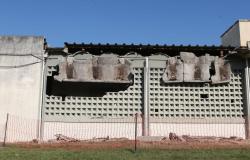Sesame production in Mato Grosso is expected to increase by 105.8% according to the 7th Grain Harvest Survey by the National Supply Company (Conab), reaching 186.7 thousand tons in the 2023/2024 harvest, compared to 90.7 thousand tons in the previous agricultural year.
The result is due to the growth of the planted area in the State by 105.9%, from 185.5 thousand hectares to 381.9 thousand hectares.
Mato Grosso’s results are above the national average, which saw an area increase of 61.4% and a projection of production growth of 62%. The State is the national leader in the production of this pulse. The municipality of Canarana (653 km from Cuiabá) is the highlight in grain production.
Sesame is one of the production chains encouraged through the Mato Grosso Rural Development Program (Proder), of the State Secretariat for Economic Development (Sedec). Since March 2021, rural producers have had access to tax incentives, with a total of 968 accredited farmers.
The benefit percentage is 62.5% for own interstate exit operations carried out through Proder and, in return, there is a 1% payment for the Mato Grosso Economic Development Fund (Fundes).
According to Vinicius Hideki, coordinator of the Mato Grosso Economic Data Center (DataHub MT), at Sedec, sesame has been growing in the State because it is a production alternative that is very resistant to heat and low humidity, in addition to being quite profitable.
According to Vinicius, cultivating sesame is a promising strategy for farmers looking to take advantage of underutilized land during periods of water scarcity.
“Embrapa and Imafir ((Institution of Producers of Beans, Pulses, Special Grains and Irrigators of Mato Grosso) develop quality research and studies, offering valuable support to producers interested in this crop. It is important to highlight the relevance of the territorial intelligence study and water resources to improve irrigated agriculture in our State, which will certainly benefit the cultivation of sesame and other special crops”, he says.
Through Sedec, the State invests around R$ 7.5 million so that Imafir, with support from the Federal University of Viçosa, University of Nebraska (USA) and the Federal Institute of Education, Science and Technology of Mato Grosso (IFMT ), point out the potential for expansion of irrigated areas in Mato Grosso.
Production diversification
During the opening of the Superfoods Summit Brasil, held in Brasília (DF), at the beginning of this month, governor Mauro Mendes signed an agreement for international commercial promotion of the sector, at the event promoted by the Brazilian Institute of Beans, Pulses and Special Harvests (Ibrafe) and ApexBrasil.
“We have made important investments in existing technologies in irrigation and genetic improvement to develop the production chain. Without forgetting to think about more flexibility, faster and more objective decisions to become important global players”, he explained.
Mauro highlighted that the government of Mato Grosso has already started partnerships to develop research aimed at implementing such technologies, demonstrating commitment to the advancement and sustainability of agribusiness in the State.
In addition to products such as soybeans, corn and cotton, of which Mato Grosso has a leading role in production in the country, the State seeks to diversify the production chain and has invested in studies such as irrigation technologies to combat irregular rainfall, which compromises the food production.
Tags: Sesame production increase Mato Grosso
--





